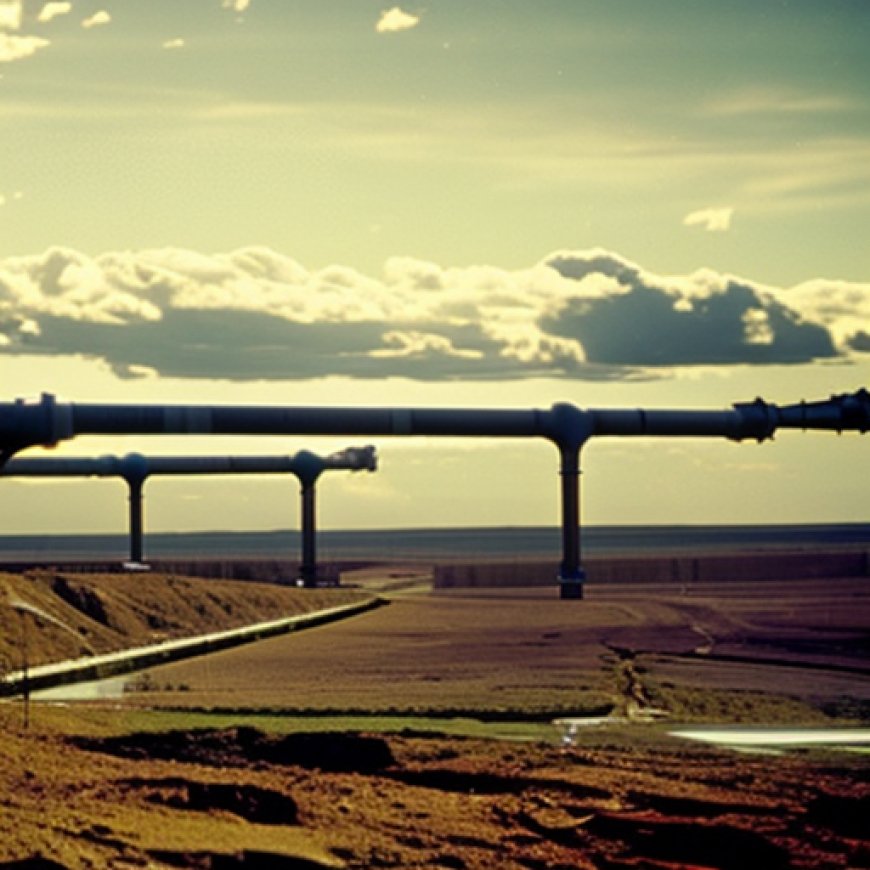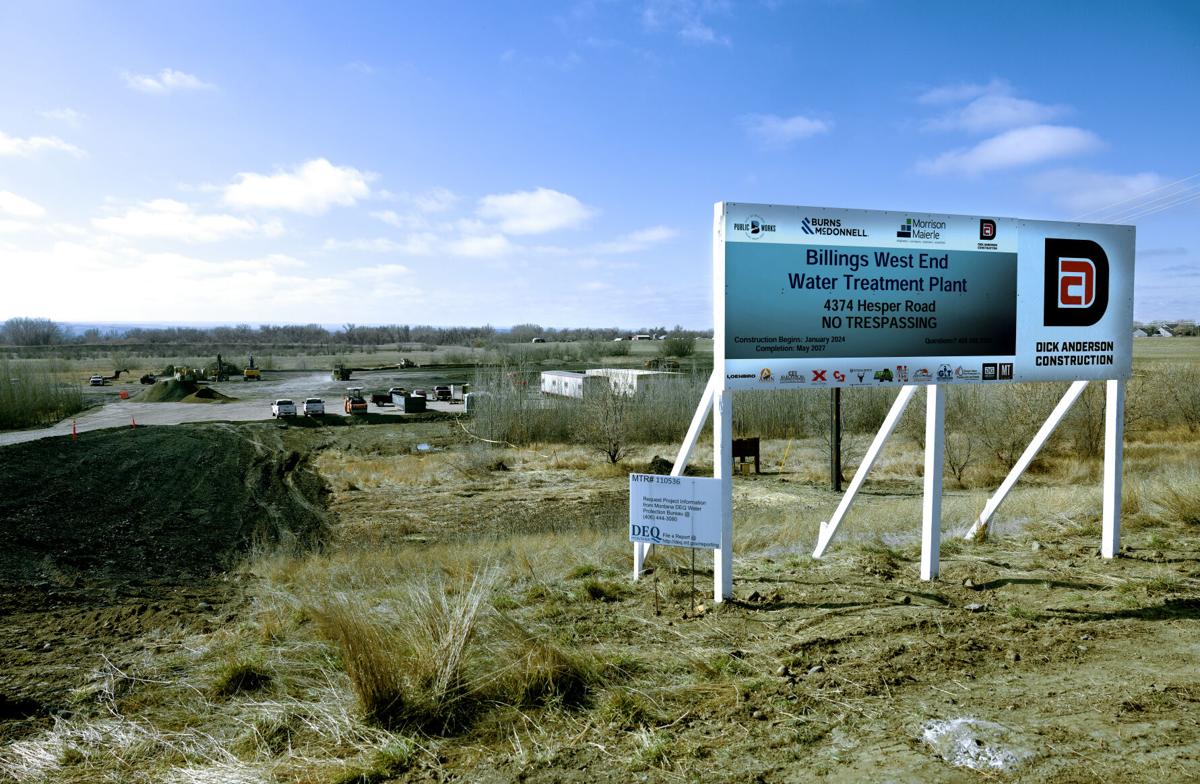Groundwater resources in West Billings studied as future development pushes in
West Billings aquifer needed to support future development Billings Gazette


A Study on the Impact of Development on Groundwater Availability in Billings’ Far West End
A team of researchers at the Montana Bureau of Mines and Geology is conducting a study to assess how development on Billings’ far West End could affect future groundwater availability. The purpose of this study is to provide city and county officials with information on the need for future city services, enabling them to make informed decisions regarding development. This study aligns with the Sustainable Development Goals (SDGs), particularly Goal 6: Clean Water and Sanitation, and Goal 11: Sustainable Cities and Communities.
Elizabeth Meredith, a hydrogeologist on the study, has stated that the aquifer, which supplies groundwater to the 1,794 wells in the area, is not rapidly depleting. This is a positive finding for the sustainable management of water resources in the region.
The project was initiated by Billings Public Works, which applied for a grant from the state’s Ground Water Steering Committee in 2021. The project received funding, surpassing eight other competing projects. This demonstrates the importance placed on addressing groundwater issues in Billings.
The Comprehensive Water Review working group, established by the Department of Natural Resources and Conservation (DNRC), is also studying groundwater use in the state. The Billings aquifer is one of five aquifers being investigated by the group. This research is crucial for achieving SDG 6, as it aims to ensure the sustainable use of water resources.
Water Scarcity and Increased Demand for Housing and Development
Water scarcity is a longstanding issue in the West, and it is now intersecting with the growing demand for housing and development. As agricultural lands are converted into subdivisions, aquifers lose recharge from irrigation and experience increased discharge from consumptive use. This poses a challenge for achieving SDG 11, which emphasizes the need for sustainable urban development.
The study conducted by the Montana Bureau of Mines and Geology aims to determine when the balancing act between water supply and demand will no longer hold. By understanding the dynamics of the Billings aquifer, policymakers can develop strategies to ensure the sustainable use of water resources in the face of development pressures.
Building a Computer Model to Explore Future Scenarios
The capacity of the Billings aquifer was last studied in 2002, which revealed that two-thirds of the recharge came from irrigation ditch loss and one-third came from precipitation. The research team has completed the main field work, which involved measuring water levels in wells. They are now in the process of building a computer model to simulate future scenarios based on different land use changes and development patterns. The findings of this model will be included in a comprehensive report expected to be completed by early 2025.

Construction has started on the $68 million West End Water Treatment Plant project with Dick Anderson Construction. The Water Treatment Plant on Hesper Road is set to become operational in late 2026.
LARRY MAYER, Billings Gazette
Challenges and Solutions for Sustainable Water Management
Expanding city services is one potential solution to address the increasing demand for water. However, this presents affordability challenges, as the cost of connecting to a public water system is passed on to homeowners. Additionally, municipalities need to invest in capacity-expanding improvements to meet the growing demand. For instance, the new Billings West End Water Treatment Plant, which costs $68 million, is the most expensive public works project in the city’s history. These challenges highlight the importance of SDG 6 in ensuring access to clean water and sanitation for all.
Extending city services into the county could take 10 or more years to complete, according to Boris Krizek, an environmental engineer with Billings Public Works. The DNRC’s Comprehensive Water Review working group is exploring ways to fund and incentivize the expansion of municipal water systems, aligning with SDG 11’s objective of creating sustainable cities and communities.
Scientists are also considering “managed aquifer recharge” as a potential solution. This involves leaving fields open and replenishing groundwater using surface water. While this approach has not been implemented in the state, it was identified as a strategy in last year’s Drought Management Plan. Implementing managed aquifer recharge requires a comprehensive understanding of ground and surface water interactions, as well as consideration of water rights implications.
The ongoing discussions and research surrounding sustainable water management demonstrate the importance of SDGs 6 and 11 in addressing the challenges posed by increased demand and limited water supply. By developing new policies and implementing holistic solutions, stakeholders can protect water resources, ensure equitable access to water, and support sustainable development in Billings and beyond.
It is clear that the cumulative effects of de minimis wells, which are exempt from the permitting process or use less than 10 acre-feet of water per year, cannot be ignored. The DNRC’s Comprehensive Water Review working group aims to protect water resources and existing water rights while addressing the needs of both current and future water users.
SDGs, Targets, and Indicators
-
SDGs Addressed or Connected to the Issues
- SDG 6: Clean Water and Sanitation
- SDG 11: Sustainable Cities and Communities
- SDG 12: Responsible Consumption and Production
- SDG 15: Life on Land
-
Specific Targets Based on the Article’s Content
- SDG 6.4: By 2030, substantially increase water-use efficiency across all sectors and ensure sustainable withdrawals and supply of freshwater to address water scarcity and substantially reduce the number of people suffering from water scarcity.
- SDG 11.3: By 2030, enhance inclusive and sustainable urbanization and capacity for participatory, integrated, and sustainable human settlement planning and management in all countries.
- SDG 12.4: By 2020, achieve the environmentally sound management of chemicals and all wastes throughout their life cycle, in accordance with agreed international frameworks, and significantly reduce their release to air, water, and soil to minimize their adverse impacts on human health and the environment.
- SDG 15.1: By 2020, ensure the conservation, restoration, and sustainable use of terrestrial and inland freshwater ecosystems and their services, in particular forests, wetlands, mountains, and drylands, in line with obligations under international agreements.
-
Indicators Mentioned or Implied in the Article
- Groundwater availability
- Water levels in wells
- Recharge from irrigation
- Discharge from consumptive use
- Land use change and development
- Capacity-expanding improvements
- Managed aquifer recharge
- Construction of exempt wells
- Water resources and existing water rights
Table: SDGs, Targets, and Indicators
| SDGs | Targets | Indicators |
|---|---|---|
| SDG 6: Clean Water and Sanitation | Target 6.4: By 2030, substantially increase water-use efficiency across all sectors and ensure sustainable withdrawals and supply of freshwater to address water scarcity and substantially reduce the number of people suffering from water scarcity. | – Groundwater availability – Water levels in wells – Recharge from irrigation – Discharge from consumptive use |
| SDG 11: Sustainable Cities and Communities | Target 11.3: By 2030, enhance inclusive and sustainable urbanization and capacity for participatory, integrated, and sustainable human settlement planning and management in all countries. | – Land use change and development – Capacity-expanding improvements |
| SDG 12: Responsible Consumption and Production | Target 12.4: By 2020, achieve the environmentally sound management of chemicals and all wastes throughout their life cycle, in accordance with agreed international frameworks, and significantly reduce their release to air, water, and soil to minimize their adverse impacts on human health and the environment. | – Land use change and development – Capacity-expanding improvements |
| SDG 15: Life on Land | Target 15.1: By 2020, ensure the conservation, restoration, and sustainable use of terrestrial and inland freshwater ecosystems and their services, in particular forests, wetlands, mountains, and drylands, in line with obligations under international agreements. | – Managed aquifer recharge – Construction of exempt wells – Water resources and existing water rights |
Copyright: Dive into this article, curated with care by SDG Investors Inc. Our advanced AI technology searches through vast amounts of data to spotlight how we are all moving forward with the Sustainable Development Goals. While we own the rights to this content, we invite you to share it to help spread knowledge and spark action on the SDGs.
Fuente: billingsgazette.com

Join us, as fellow seekers of change, on a transformative journey at https://sdgtalks.ai/welcome, where you can become a member and actively contribute to shaping a brighter future.







